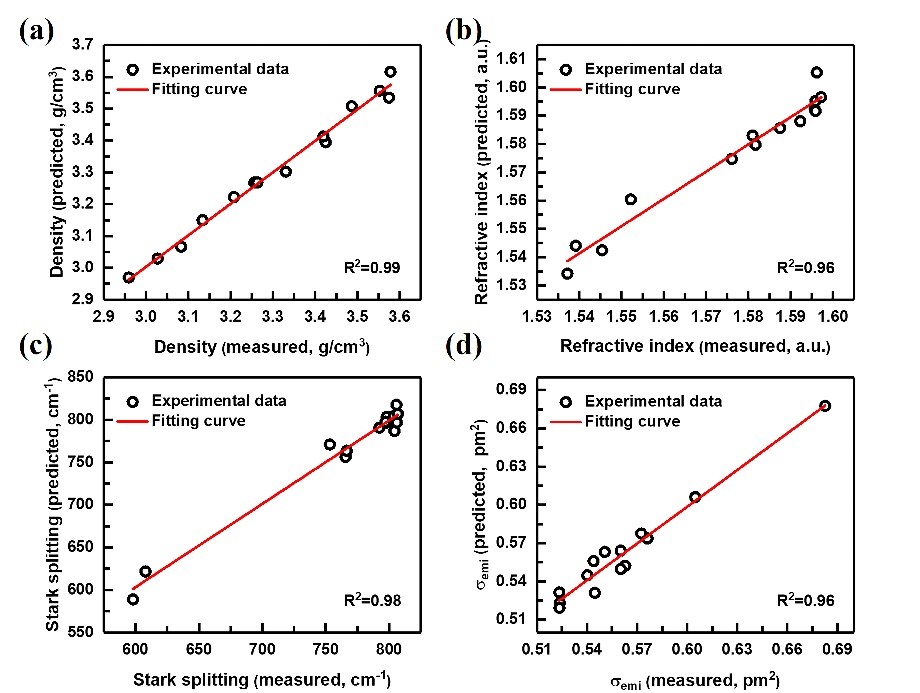Recently, the research team of Shanghai Institute of Optics and Fine Mechanics, Chinese Academy of Sciences has made new progress in the structure-property modeling method for phosphogermanate glass based on XPS.
In order to solve the thermal blocking effect in Yb3+-doped phosphate glass, a structure-property model with a highly fitting degree was established to analyze the field strength and neighbor symmetry of Yb3+ in phosphogermanate glass, based on the structural units extracted by O-1s XPS.
The model was used to explore the relationship between structure and property of this series glasses, providing reliable support for establishing a “glassy genome.” Related research results have been published in Materials Science and Engineering B.
Presently, how to accelerating glass design through modeling is an attractive topic. The O-1s photoelectron is very sensitive to environmental changes, and its intensity varies linearly with the oxygen content in different environments.
Thus, for multi-component oxide glass, O-1s XPS can distinguish vital structural oxygen effectively, such as bridging oxygen (BO) or non-bridging oxygen (NBO). A structure-property model of this series of glasses was established, based on the structural units extracted by O-1s XPS and the corresponding properties (e.g., density, refractive index, Stark splitting, and emission cross-section).
The results indicated that density and refractive index might be influenced mainly by NBOs, while Stark splitting and emission cross-section may be greatly affected by the structural units related to germanium and the NBOs related to phosphorus, respectively.
Under the structural constraints of this model, the range of properties was predicted through probability distribution simulated using the Monte Carlo method.
This universality structure-property model can be extended to the study of the structure-property of multi-component oxide glasses, providing a new strategy to reduce the thermal blocking effect or improve the spectral properties in Yb3+-doped phosphogermanate and reliable support for the establishment of “glassy genome.”
Related research was supported by the National Natural Science Foundation of China (No. 51872308).

Comparison of the measuring properties with O-1s XPS structure -property model predicting values for the phosphogermanate glass: (a) density; (b) nd; (c)Stark splitting; (d) σemi. (Image by SIOM)
Article website:
https://doi.org/10.1016/j.mseb.2020.114775
Contact:
Mr. Wu Xiufeng
General Administrative Office
Shanghai Institute of Optics and Fine Mechanics, CAS
Email: xfwu@siom.ac.cn